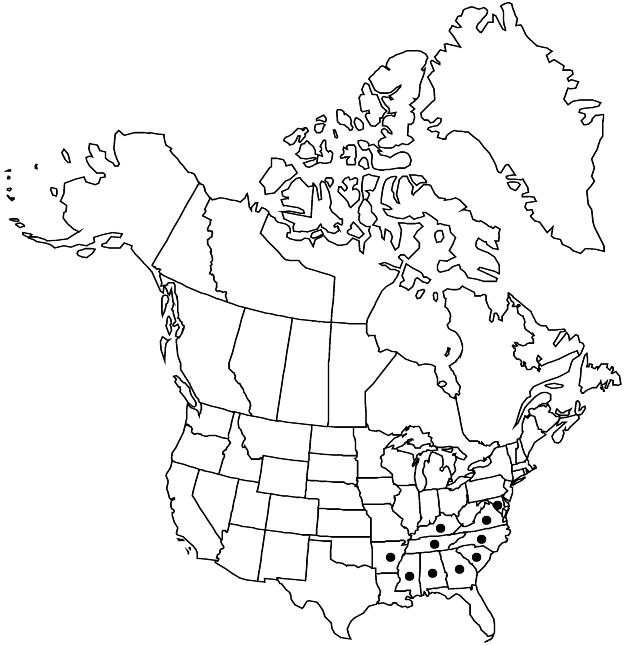Philadelphus hirsutus
Gen. N. Amer. Pl. 1: 301. 1818.
Shrubs, 5–20 dm. Stems brown, gray, or stramineous, branched, glabrous to densely strigose; bark deciduous, exfoliating or flaking, reddish; branches sprawling; axillary buds exposed. Leaves: petiole 1–9 mm; blade white or gray abaxially, green adaxially, broadly lanceolate to broadly ovate or narrowly to broadly elliptic, 2–8 × 1–5.5 cm, herbaceous, base narrowly cuneate to rounded, margins entire or irregularly to regularly serrate, crenate, or dentate, plane, abaxial surface slightly to densely loosely strigose, hairs often gently curved or arched-twisted, 0.7–1.5 mm, adaxial surface glabrate to moderately strigose, hairs usually evenly distributed, when sparse, sometimes distributed mainly along major veins, 0.2–0.8 mm, either thick-based and tightly antrorsely appressed or less thick-based, longer and looser, similar to abaxial hairs. Inflorescences cymes or cymose racemes, or flowers solitary, 1–3 (–5) -flowered, proximal 2 (–4) flowers often in axils of leaves or bracts. Pedicels 2–11 mm, moderately to densely strigose. Flowers: hypanthium glabrous or densely strigose, hairs tightly or loosely appressed; sepals ovatelanceolate or triangular, 3–6 × 2–4 mm, apex acuminate, abaxial surface sparsely to densely strigose, adaxial surface glabrous except densely villous distally; petals white, oblong, obovate, or orbiculate, 5–13 × 4–13 mm; stamens 14–35; filaments distinct, 3–9 mm; anthers 1 × 0.7 mm; style 1, clavate, 4–6 mm; stigmatic portion 2–3 mm. Capsules obconic to obovoid, (3–) 4–7 × 3–6 mm. Seeds not caudate, 0.9–1.2 mm. 2n = 26.
Phenology: Flowering Apr–May; fruiting Jun–Aug.
Habitat: Bluffs, rock outcrops, seepage areas over rock, stream banks, particularly over calcareous sedimentary or mafic metamorphic or igneous rocks.
Elevation: 100–800 m.
Distribution

Ala., Ark., Ga., Ky., Md., Miss., N.C., S.C., Tenn., Va.
Discussion
The occurrence of Philadelphus hirsutus in Maryland is believed to be due to an introduction. Philadelphus hirsutus is the most xerophytic of the native southeastern species of Philadelphus, often occurring on rock outcrops with only seasonal moisture. It is sometimes confused with P. pubescens; the undivided style and exposed buds are diagnostic.
Selected References
None.
Lower Taxa
"connate" is not a number. "distinct" is not a number.